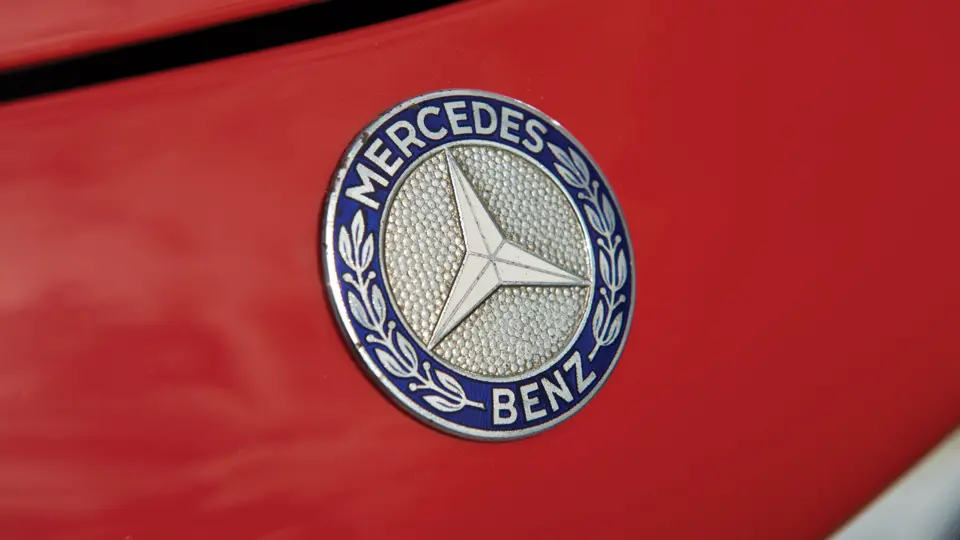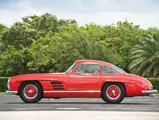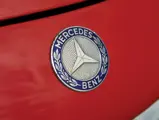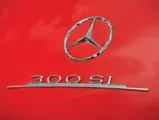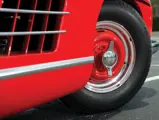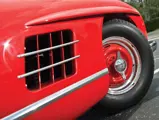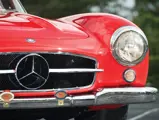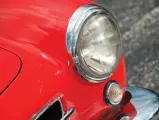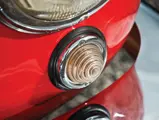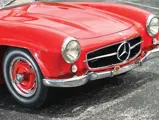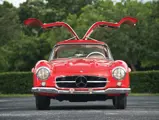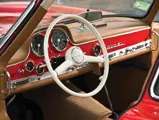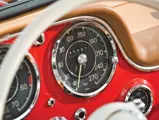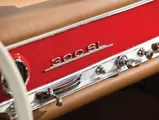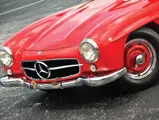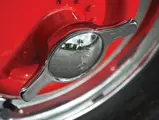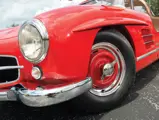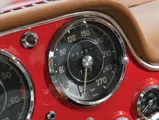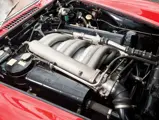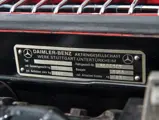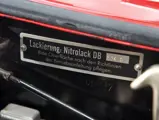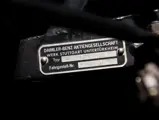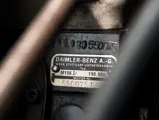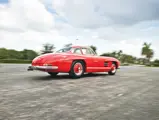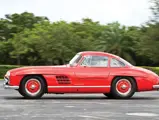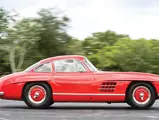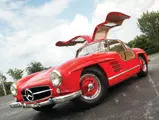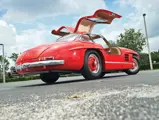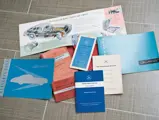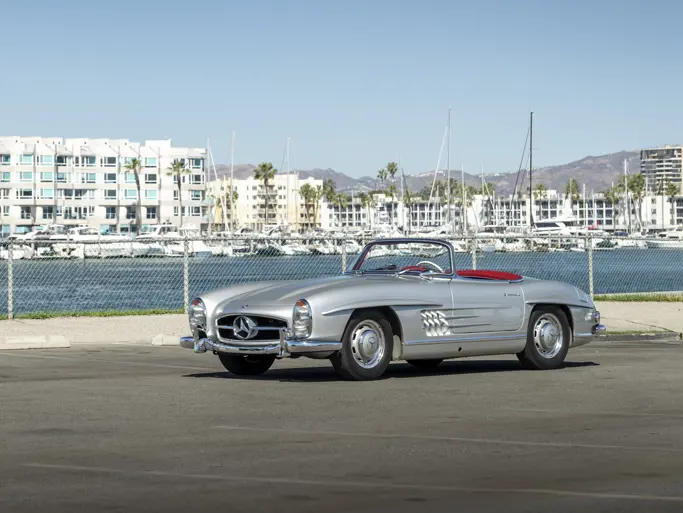215 bhp (DIN), 240 bhp (SAE), 2,996 cc OHC inline six-cylinder engine with Bosch mechanical fuel injection and dry-sump oiling, four-speed all-synchromesh manual gearbox, independent front suspension with double wishbones, coil springs, and anti-roll bar, independent high-pivot swing-axle rear suspension with radius arms and coil springs, and servo-assisted, four-wheel hydraulic drum brakes. Wheelbase: 2,400 mm
• Only two owners from new
• Upgraded in period with rare “Sport” engine and 4.11 rear end
• Rare, extensive, and detailed original documentation
• Original Rudge wheels and belly pans
As with many of the most important sports cars, the development of the roadgoing Mercedes-Benz 300SL and its subsequent importation into the crucial United States market would not have been possible without Mercedes-Benz’s American distributor, the formidable Max Hoffman. While attending a 1954 meeting of the Daimler-Benz board of directors, Hoffman argued passionately for a production version of the 300SL racing car. According to legend, despite initial objections, the determined Hoffman prevailed and left Germany with a commitment for the construction of 1,000 SLs.
Introduced in 1954 to thrilled crowds in New York, the Mercedes-Benz 300SL was essentially a supercar with a price tag well in excess of $7,000. Despite the high price, the immediate and long-term success of the 300SL was due in large part to the growing American fascination with smaller, more nimble European sports cars.
The production 300SL capably incorporated the technological advancements that resulted from Mercedes-Benz’s racing program. Regarding the car’s nomenclature, 300, of course, represented the engine’s displacement of three-liters, while “SL” denoted Sport Leicht (light). A key factor in the car’s sparkling performance was the car’s extremely rigid yet light tubular frame, designed by Rudolf Uhlenhaut, which was truly a triumph of design and engineering. Based on an intricate network of many thin tubes, Uhlenhaut’s frame design provided incredible strength yet weighed just 82 kilograms!
The sleek body design was a classic case of form following function. The attractive bulges over the wheel openings, for instance, actually improved high-speed stability, and the two longitudinal hood bulges and distinctive grillwork on both front wings removed excessive heat from the engine bay while reducing interior noise. In addition, lightweight aluminum was used extensively for the bodywork, particularly for the doors, bonnet, boot lid, and interior sheet metal. While the rest of the car utilized steel panels for the bodywork, the entire car, in ready-to-drive form, including the spare wheel, tool kit, and fuel, tipped the scales at just 1,295 kilograms (2,855 pounds). Designed for high-speed, cross-country travel, the 300SL was equipped with a large 130-liter fuel tank.
Compared to competitive sports cars of its time, the 300SL gained a formidable reputation not only for high performance but also for its exceptional build quality and advanced design. Contemporary sports cars featured carburetors, solid rear axles, and pushrod engines, but the 300SL, by comparison, offered precise Bosch fuel injection, independent rear suspension, and an overhead camshaft, to name but a few of its many engineering advancements. Ultimately, just 1,400 ‘Gullwing’ coupes were built through 1957.
The 300SL offered here is a unique example with a known, continuous ownership from new. The Mercedes-Benz 300SL Gullwing Register indicates that this car was originally imported to Puerto Rico and was painted Fire Engine Red (DB 534) with Natural leather interior (1066). According to the Gullwing Register, its first owner was Mr. Alfredo Haeussler de Anca, of San Juan. As a racing enthusiast himself, he opted to immediately utilize the car for competitive events on the island, as evidenced by the period photographs of the car at the Puerto Rico airstrip in preparation for racing.
In 1961, under the direction of Mercedes-Benz importer H.V. Grosch and the car’s owner, Mr. Haeussler, it was decided to return the car to the Mercedes-Benz factory in Germany, where it would essentially be mechanically upgraded to the “Sport” specifications that some of the new 300SL roadsters were being built to. It was shipped back to Germany, where it was upgraded with the highly desirable and costly engine, the corresponding camshafts, “Sport” shock absorbers and suspension, a 4.11 rear end, the newer M-B braking system, Rudge wheels, as well as the replacement of any and all parts that had been worn down or needed refurbishment from the competitive racing it had enjoyed in Puerto Rico. Amazingly, all the original invoices from the factory for this work still exist and will accompany the car in its sale.
Following the completion of the extensive upgrades on the car, it was sent back to Puerto Rico, where it remained in the care of its first racing enthusiast owner. After a number of years, he put the car into storage, where it would remain for some time, until it was then sold to its most recent owner.
Shortly after the second owner acquired the Mercedes-Benz, a full restoration was executed with his close supervision. As a mechanical engineer and seasoned collector, he knew precisely what to look for throughout the process. Following completion, the Mercedes-Benz was shown at several AACA events, where it immediately garnered a Junior and Senior National First Prize and was appropriately presented with a Grand National Award in 2008, all of which clearly attesting to the quality of the professional restoration. Today, the car remains highly detailed and notably still retains the original Rudge wheels and belly pans, after having benefitted from storage in its own climate controlled environment.
An amazing assortment of documents are included in the sale of this car, beginning with the original Bill of Sale and including a large selection of original Mercedes-Benz 300SL booklets, brochures, manuals, and instruction sheets (many in both Spanish and English), as well as documentation related to its transport from Germany to Puerto Rico, dealer invoices, and assorted government documents relating to the importation of the car.
As part of the dossier of information, there is a large amount of correspondence related to the work executed at the factory, including payment receipts and work order acknowledgements, which are bookended with the return shipping information from Germany to Puerto Rico. Additionally, it is within this very important documentation that one can see the upgraded engine installation with “Sport” camshafts for a cost in excess of $4,000, as well as the 4.11 rear end and all other work done to upgrade the car for racing.
This 300SL Gullwing is a highly unique example amongst its peers that has routinely benefited from thoughtful care and maintenance and remains in show quality condition. Resplendent in its original Fire Engine Red with Natural leather interior and its rare and distinctive “Sport” powerplant, along with other higher performance upgrades, this particular 300SL coupe is worthy of close inspection. It is, unquestionably, one of the finest examples of an already legendary breed.


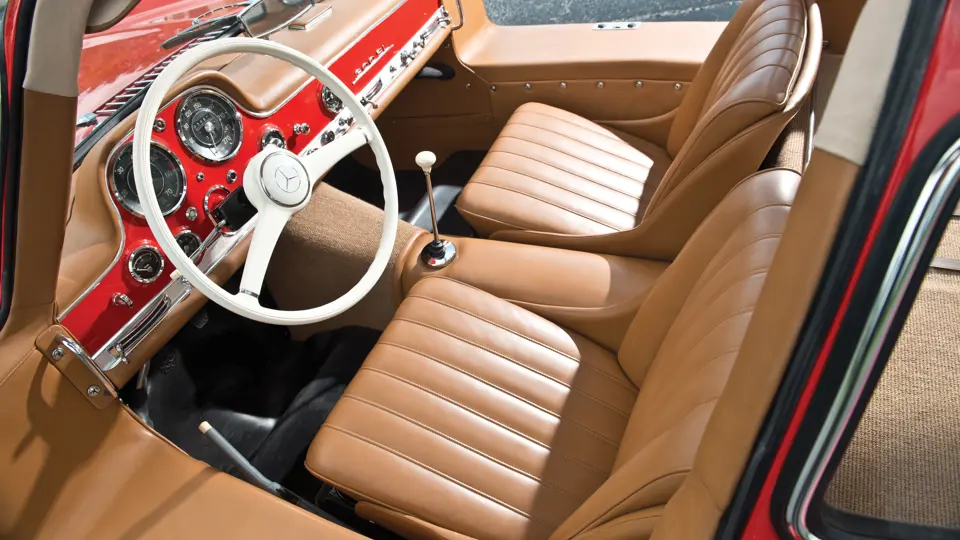

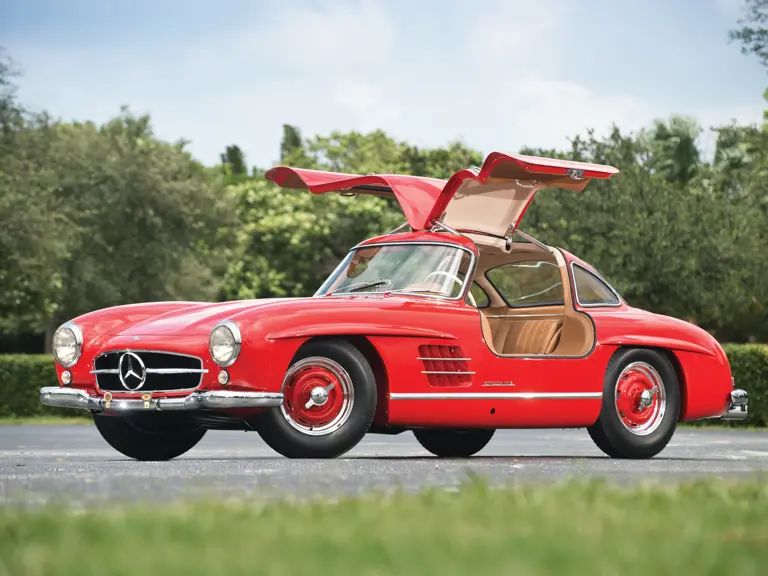
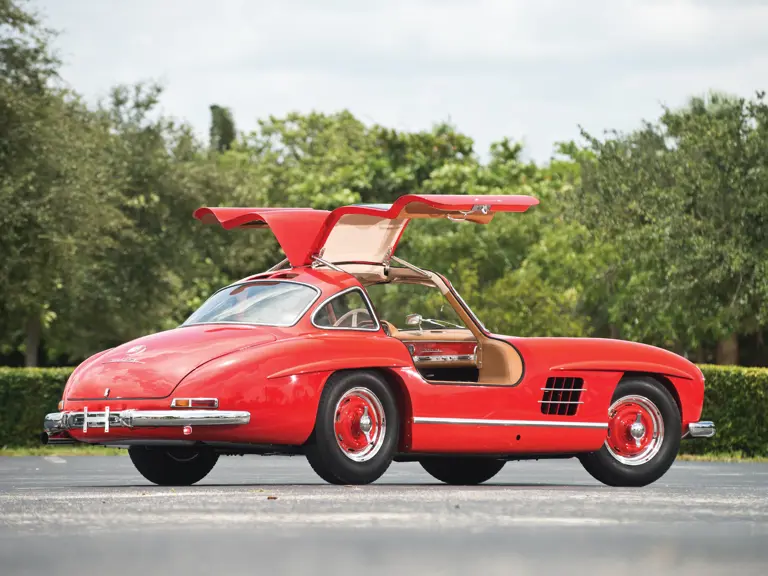
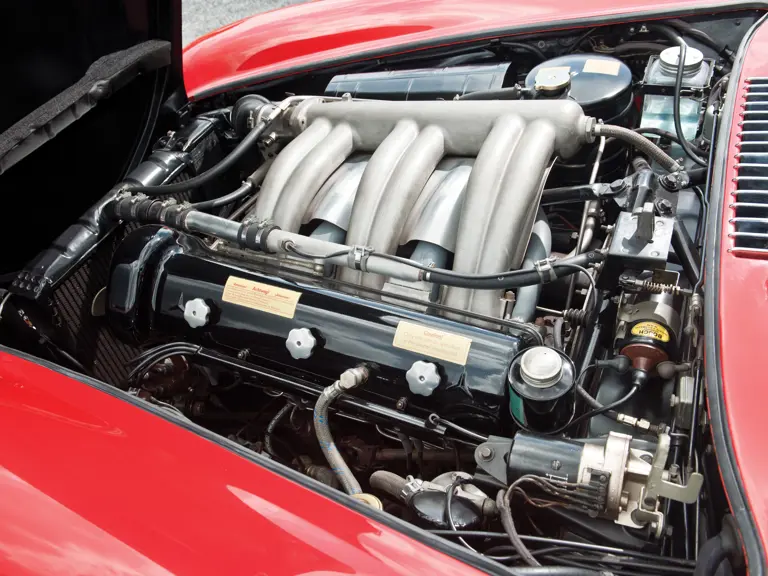

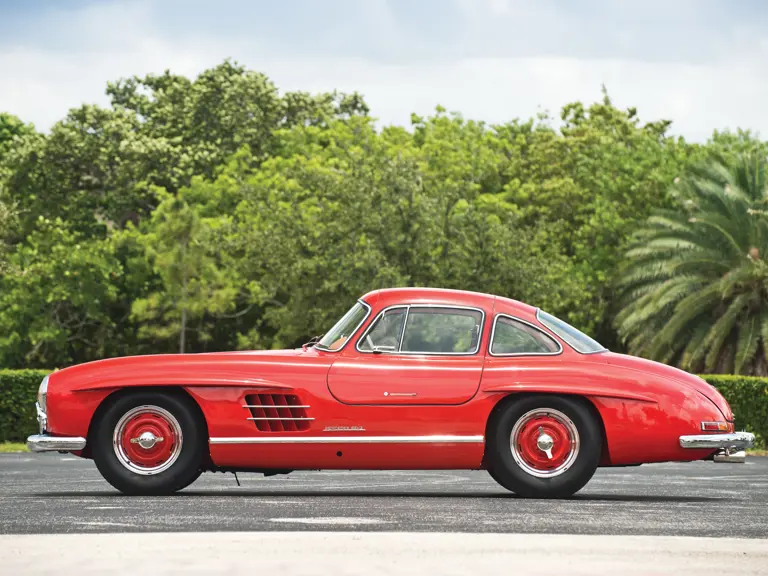
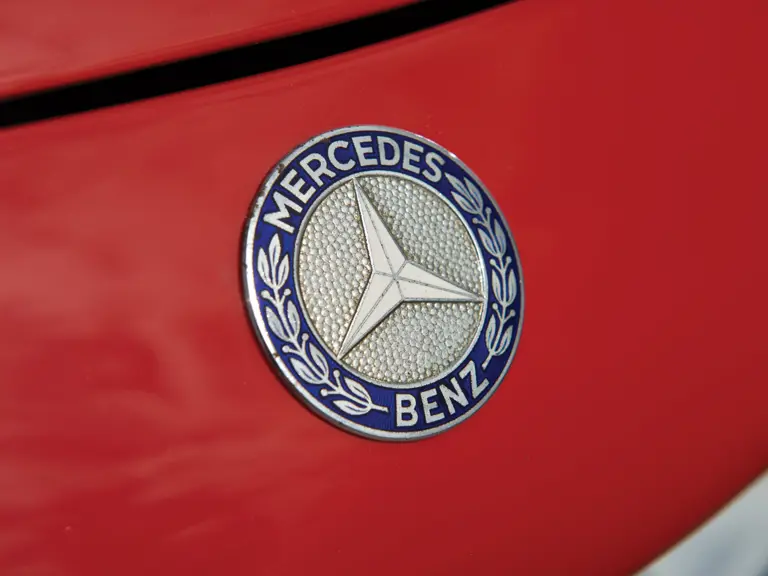

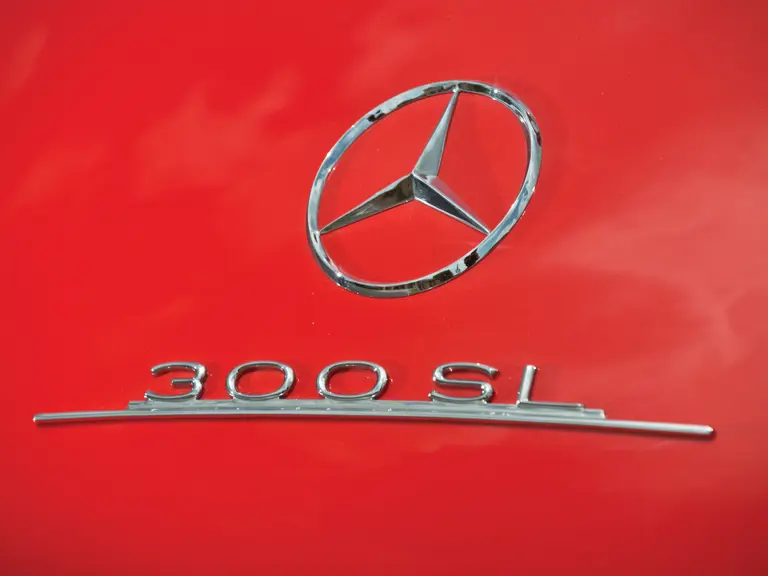
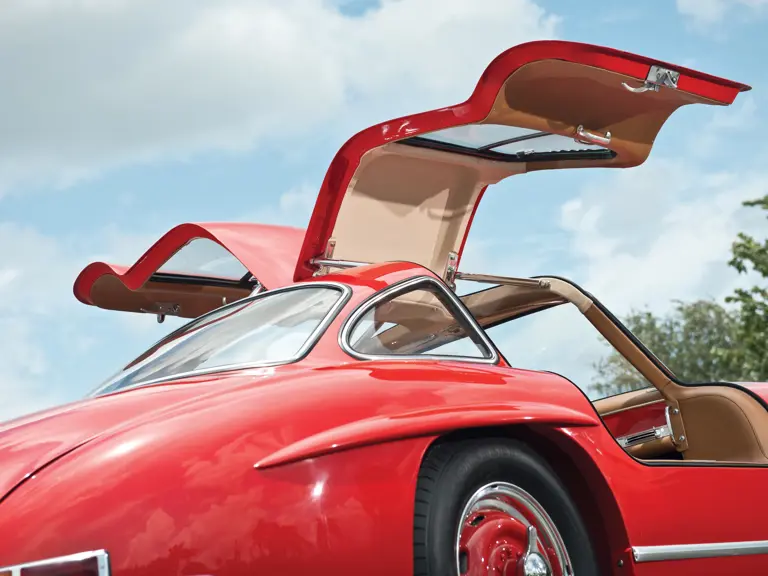


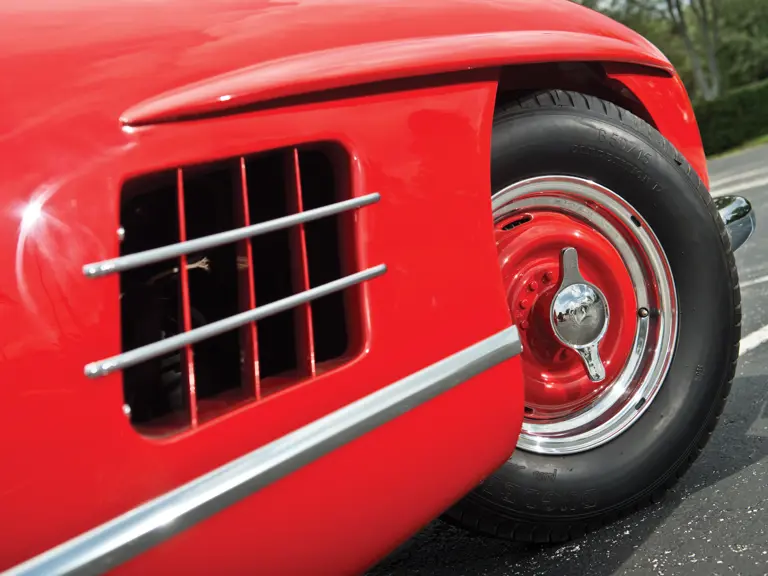
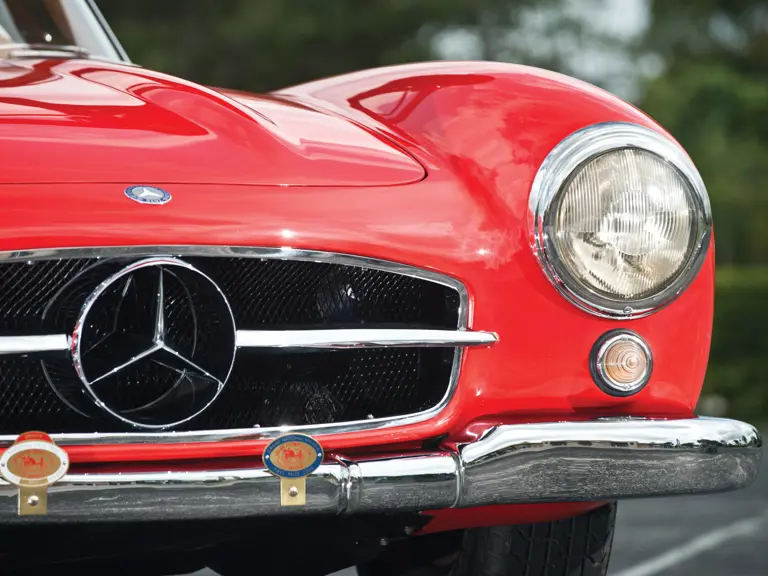
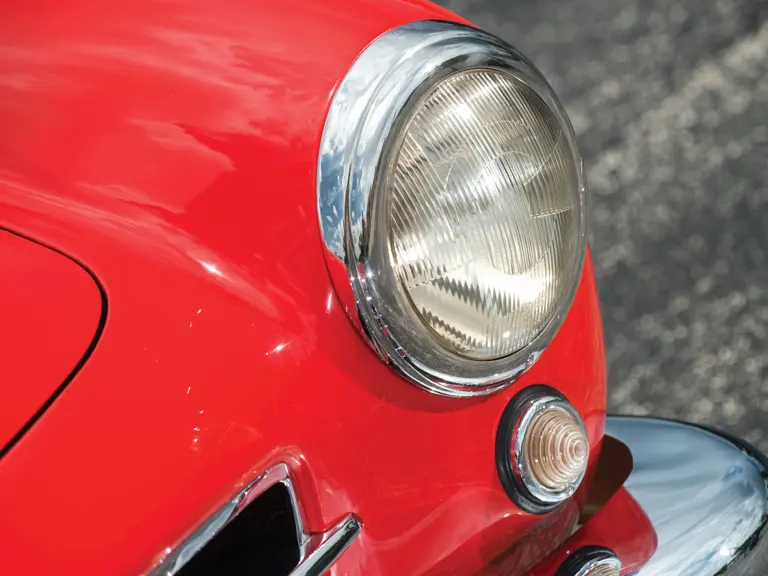
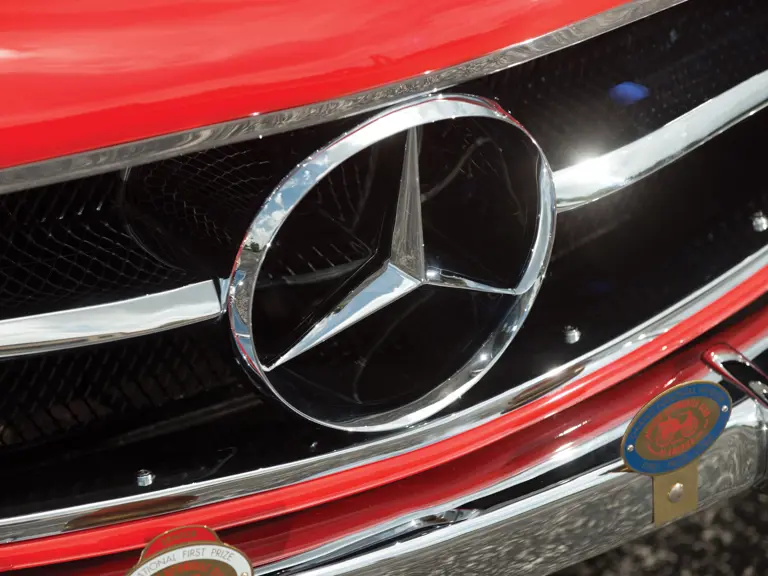

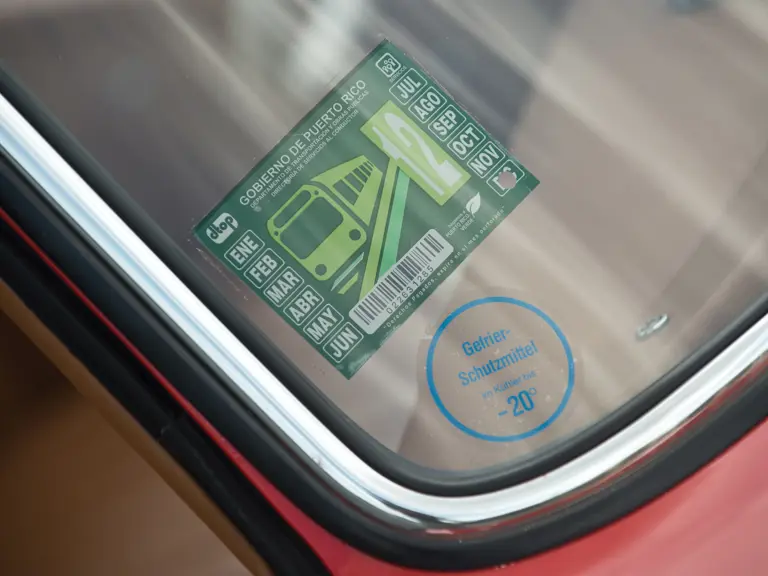
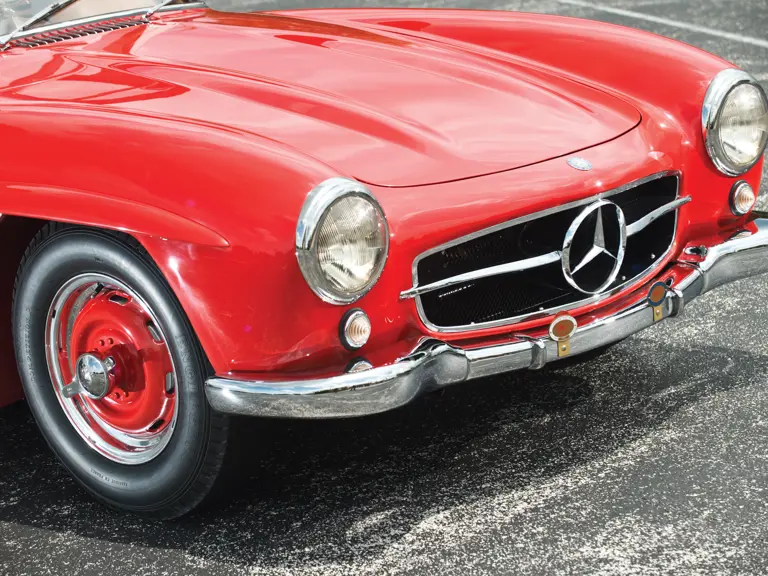

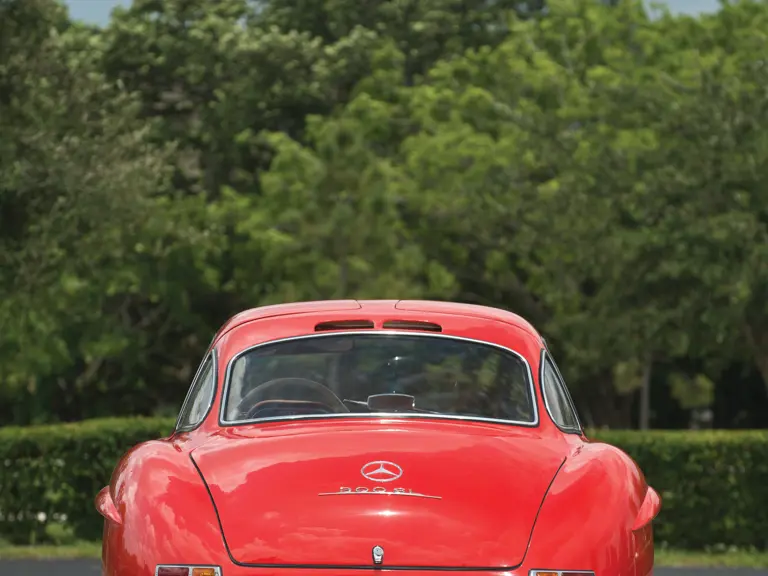
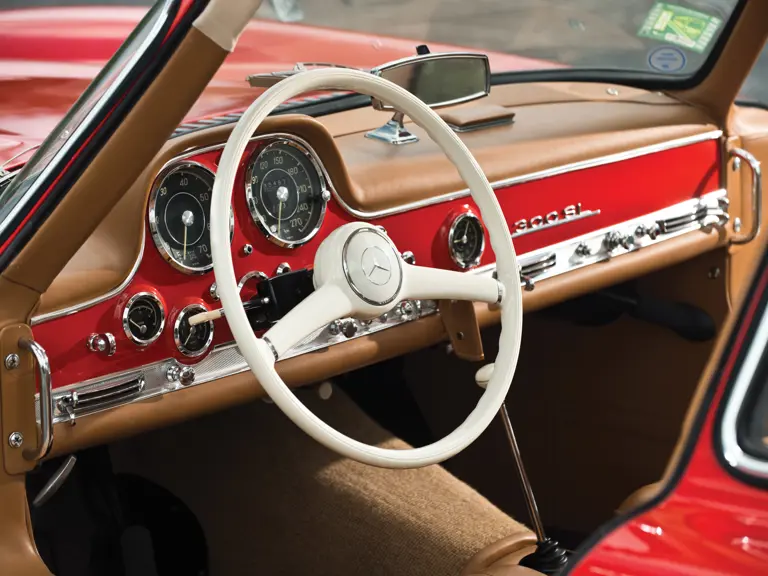
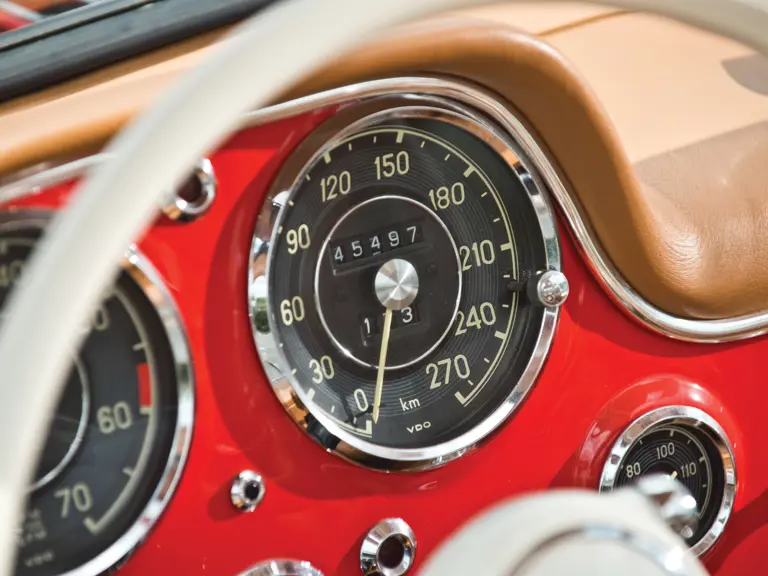

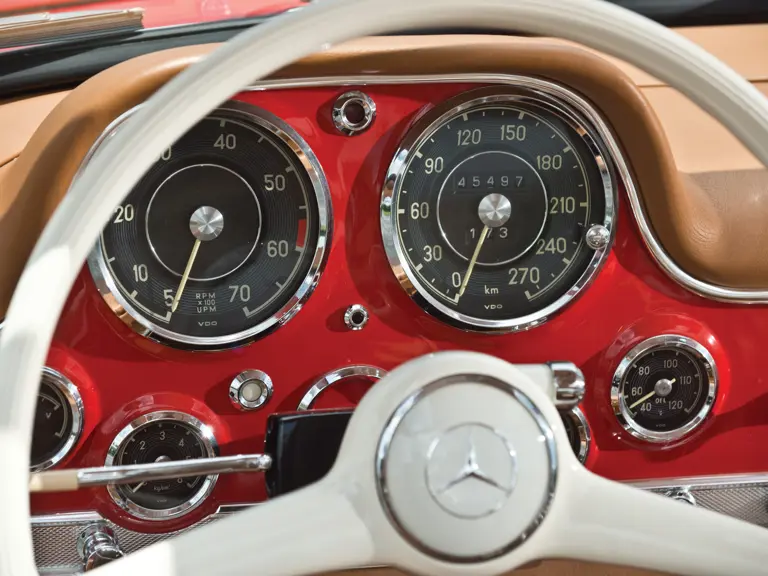
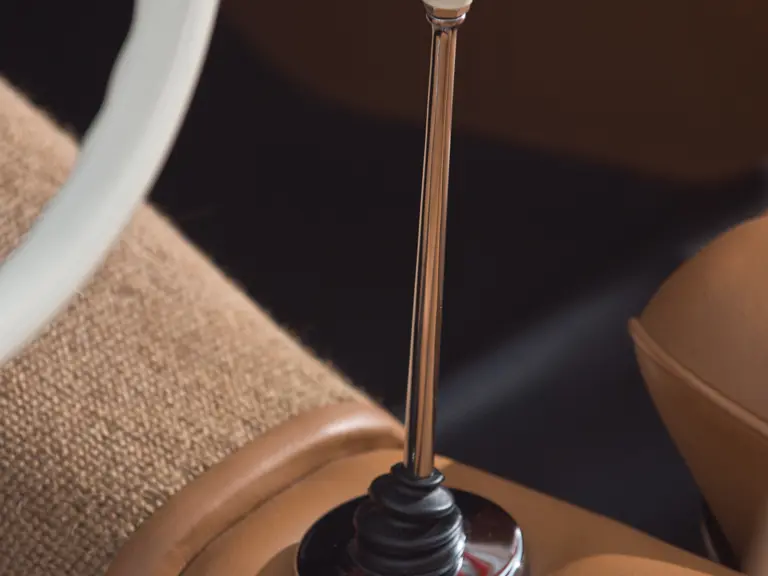
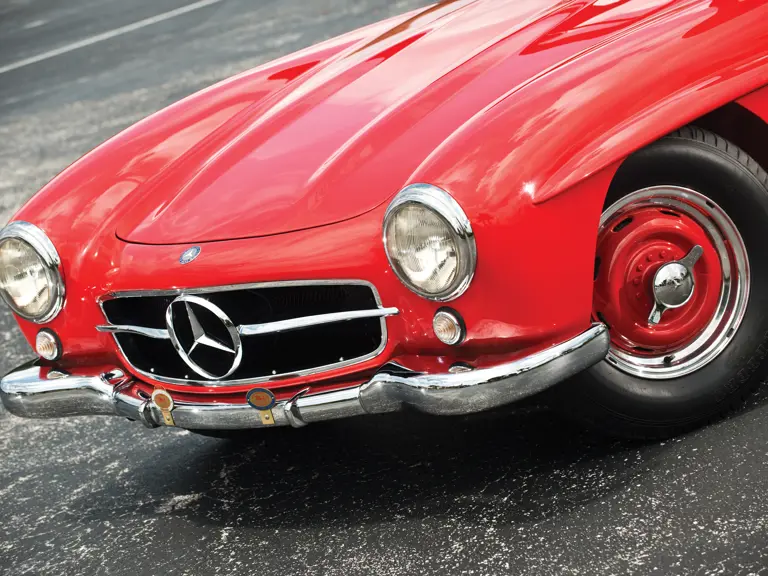
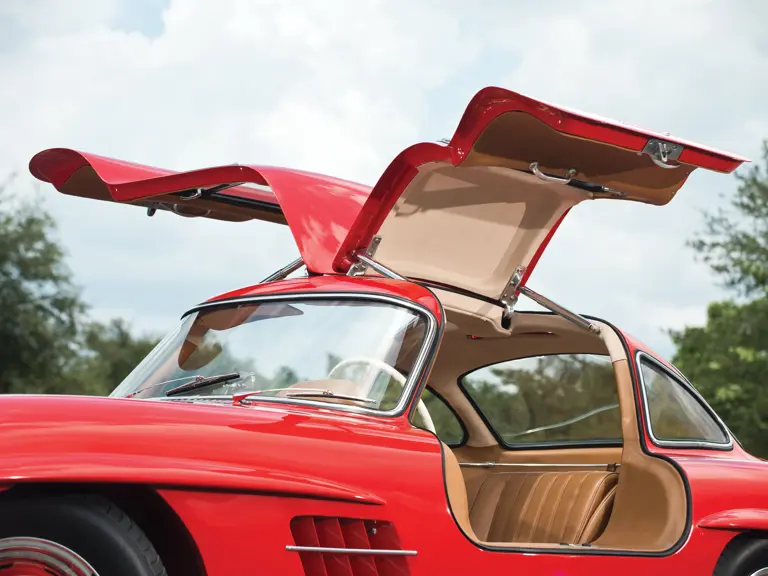
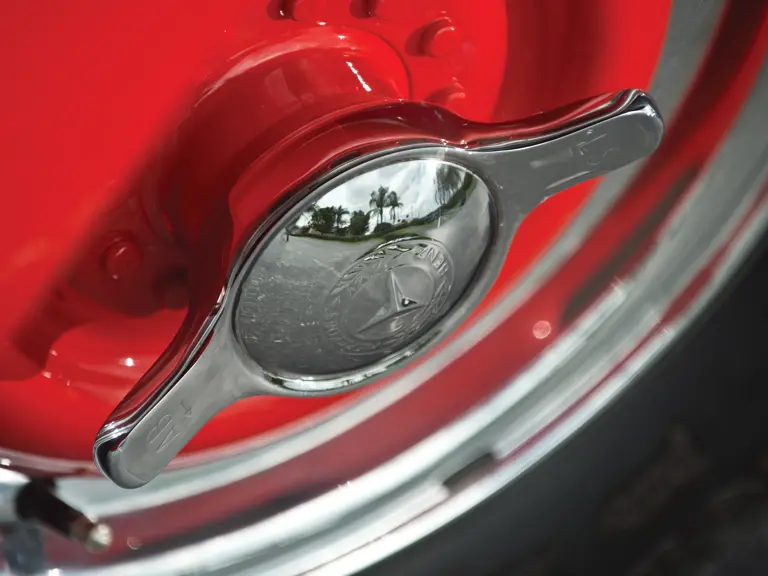

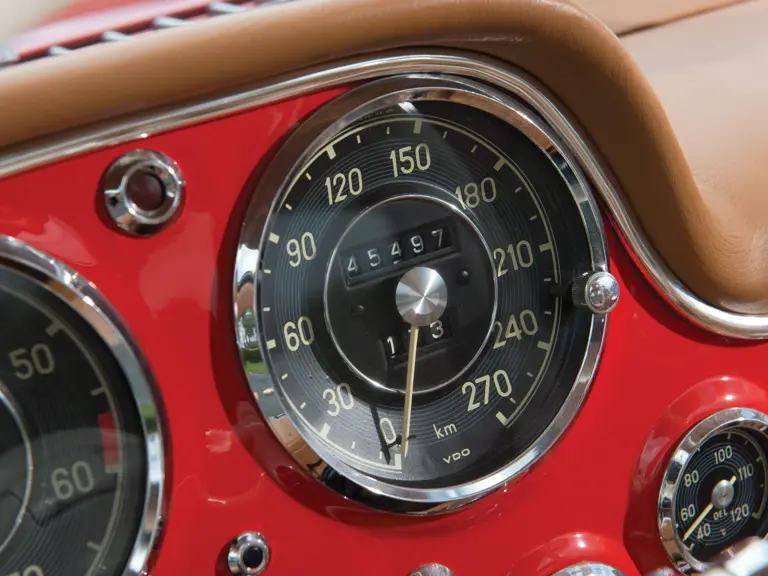
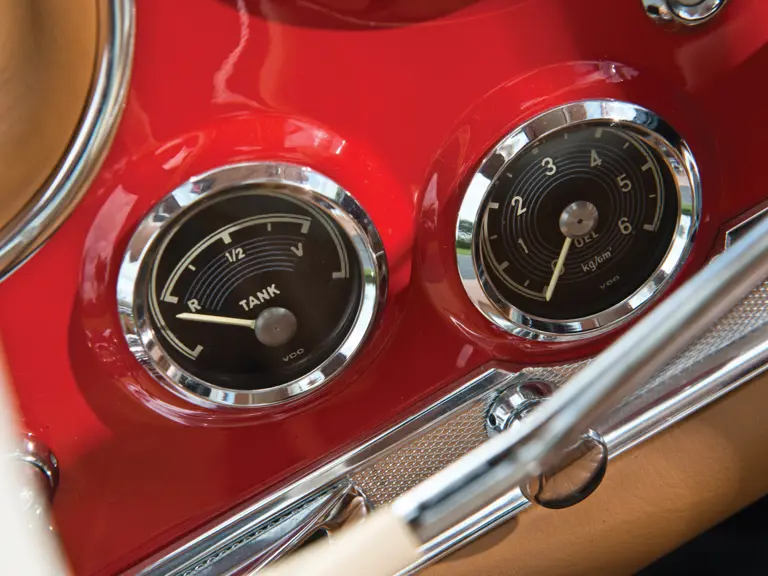
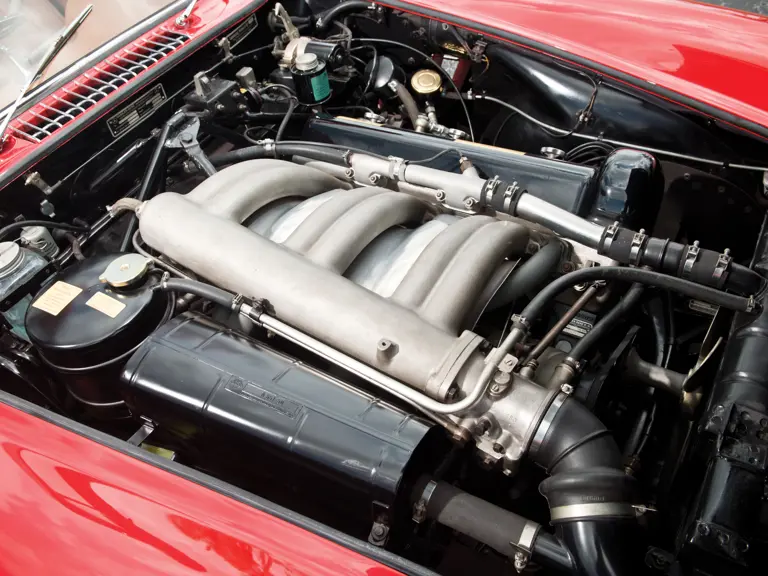
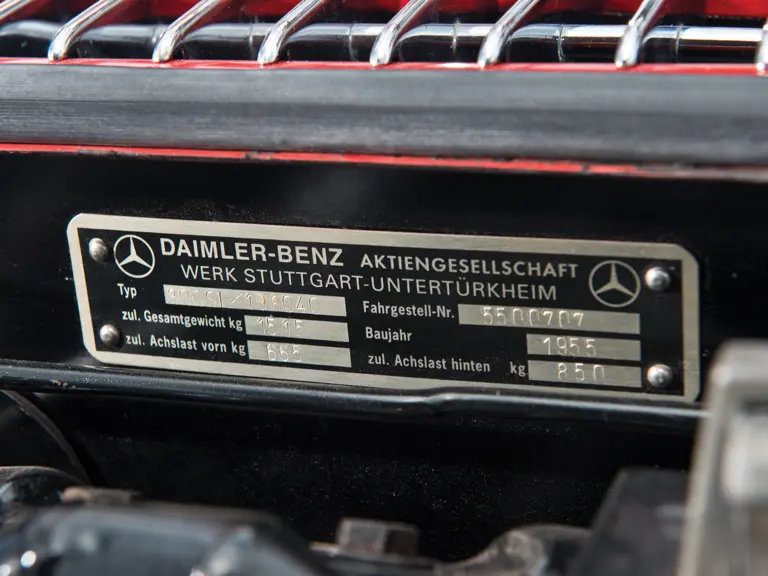
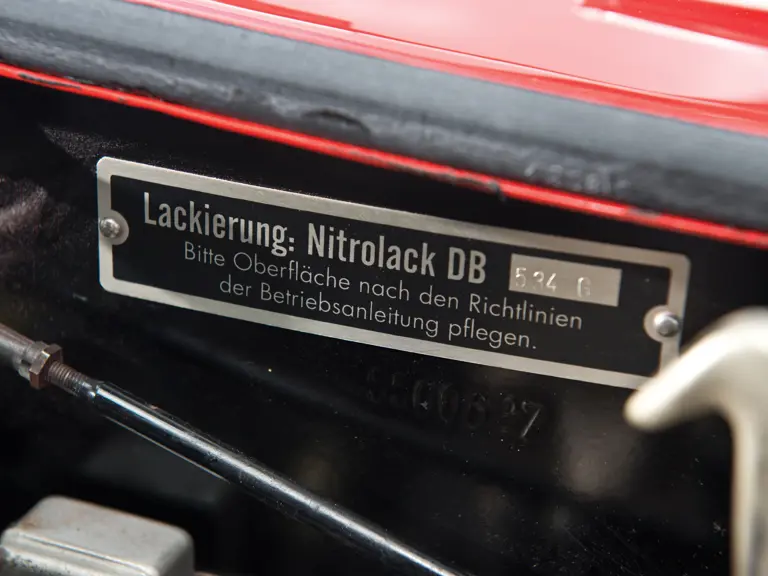

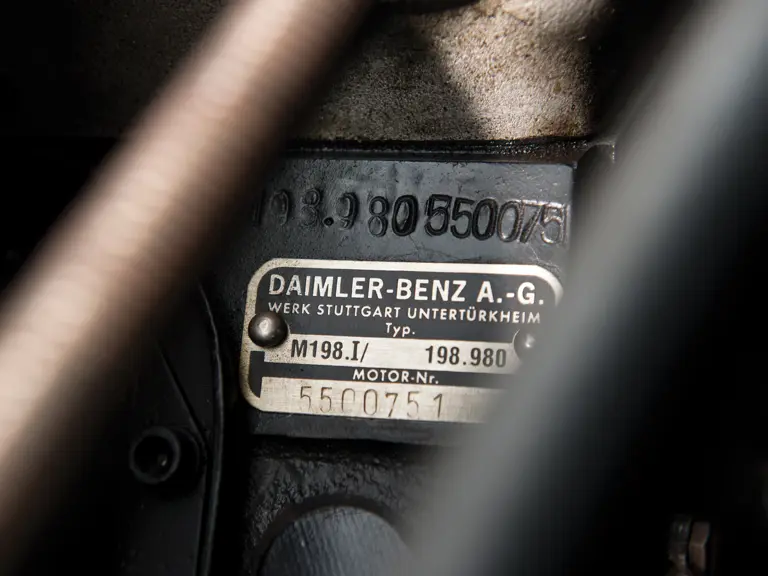
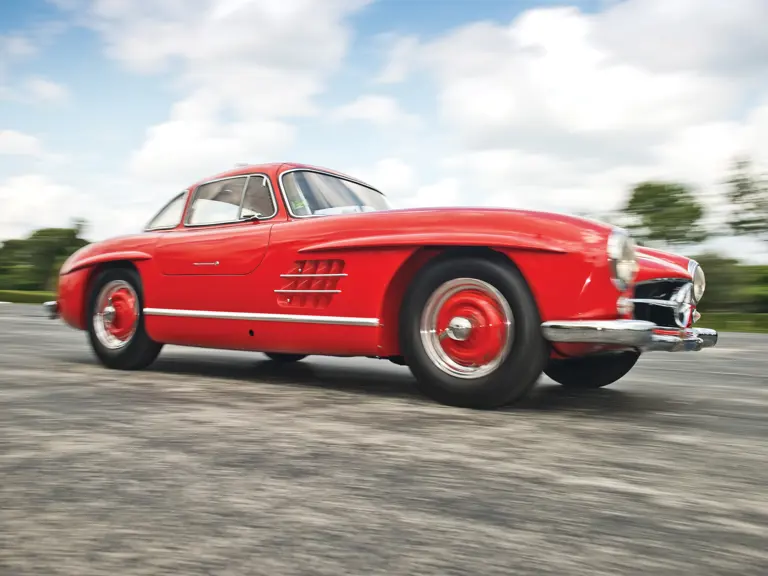
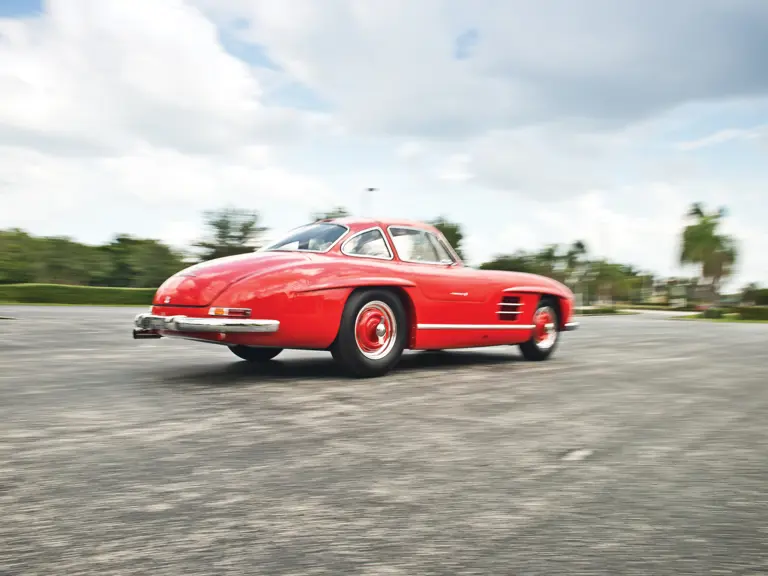
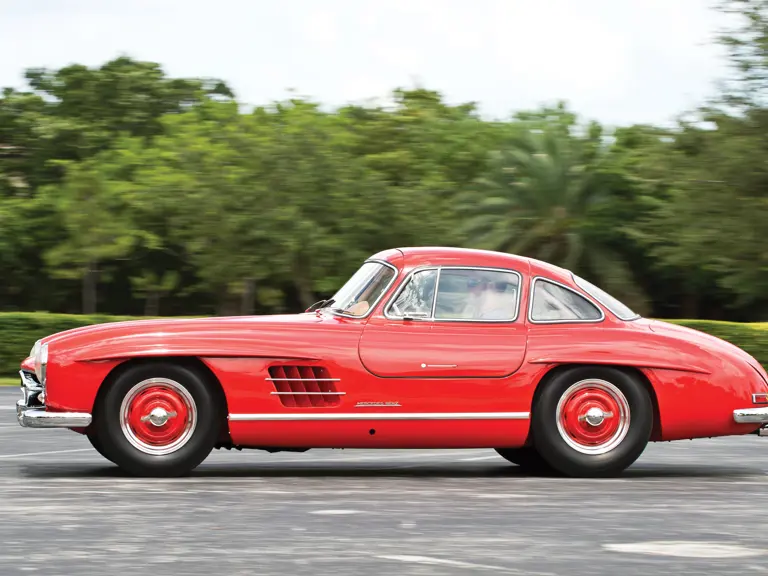
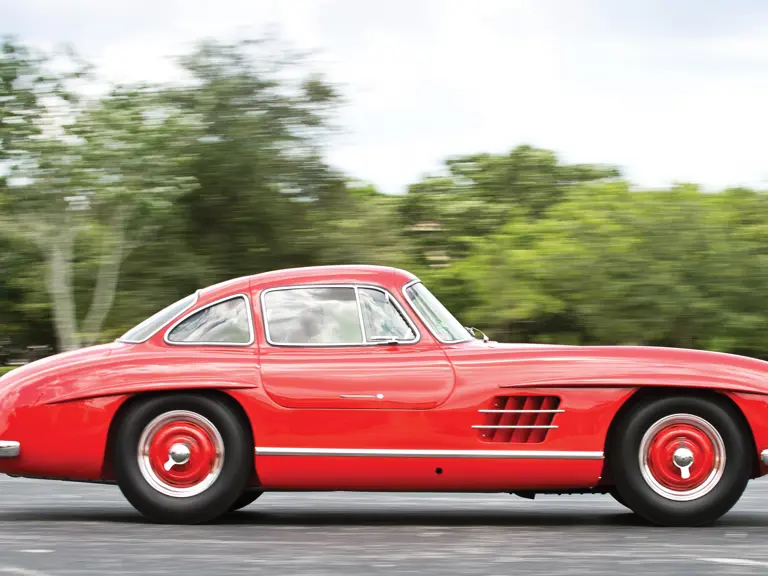
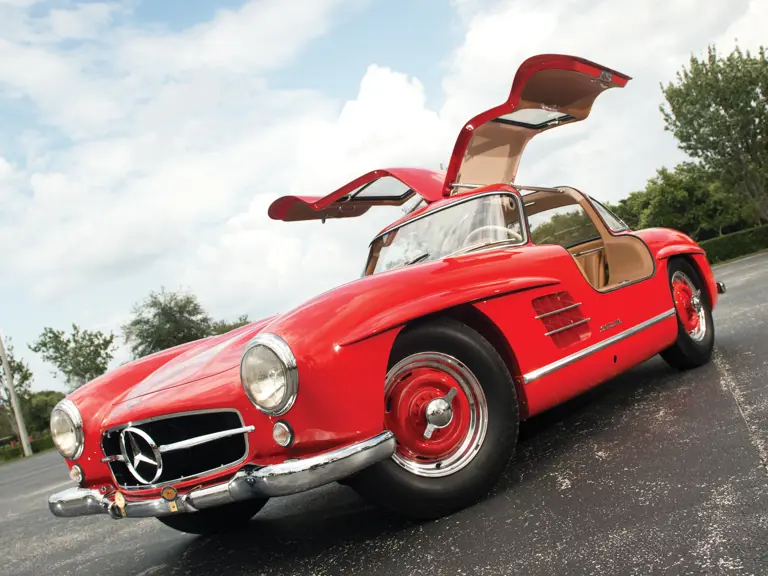
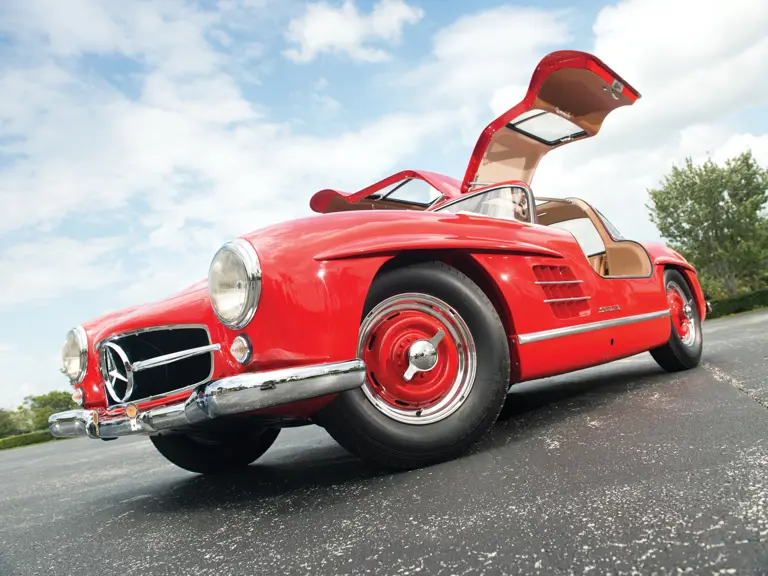
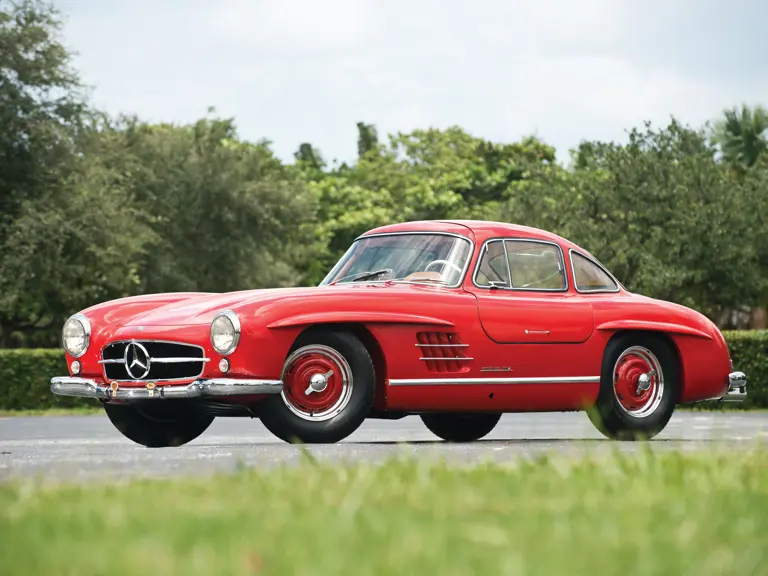

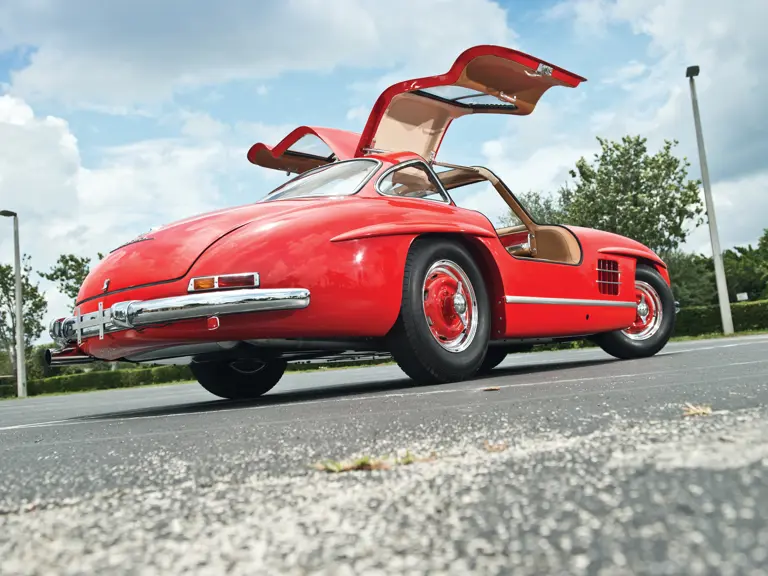
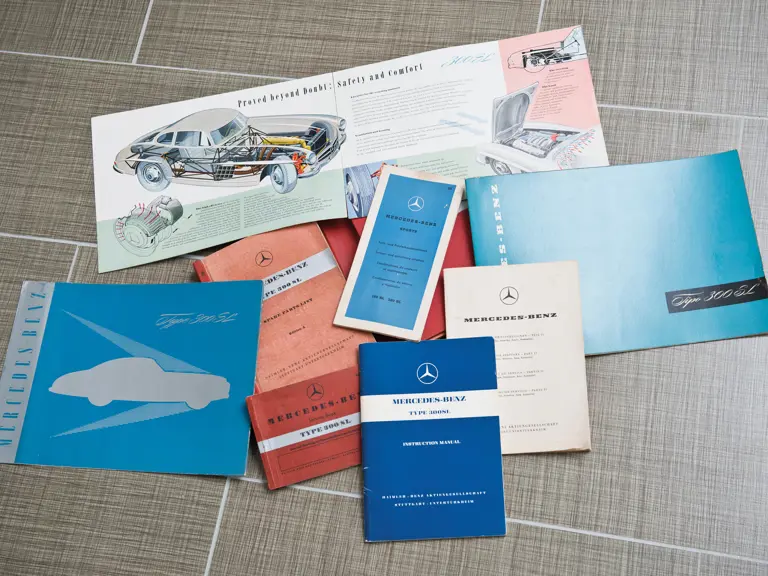
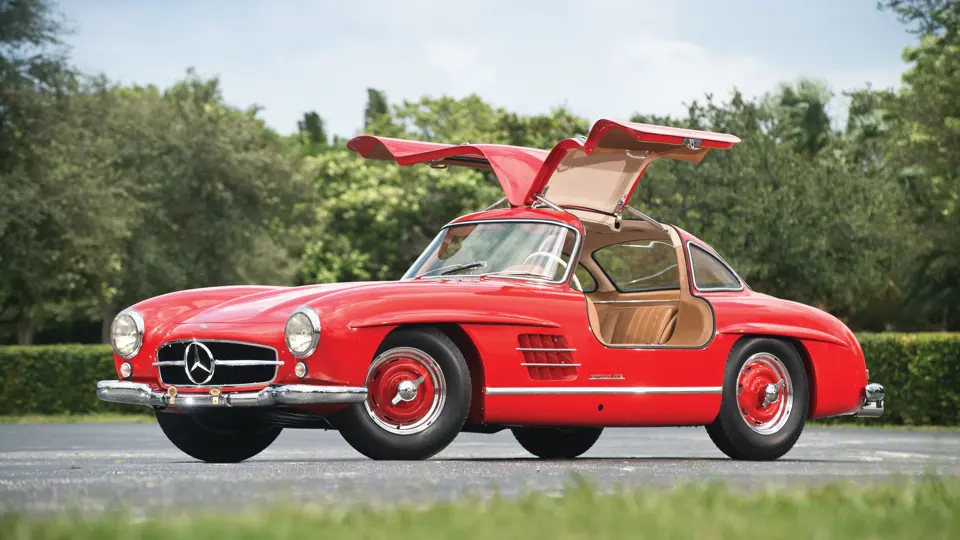
 | Monterey, California
| Monterey, California

